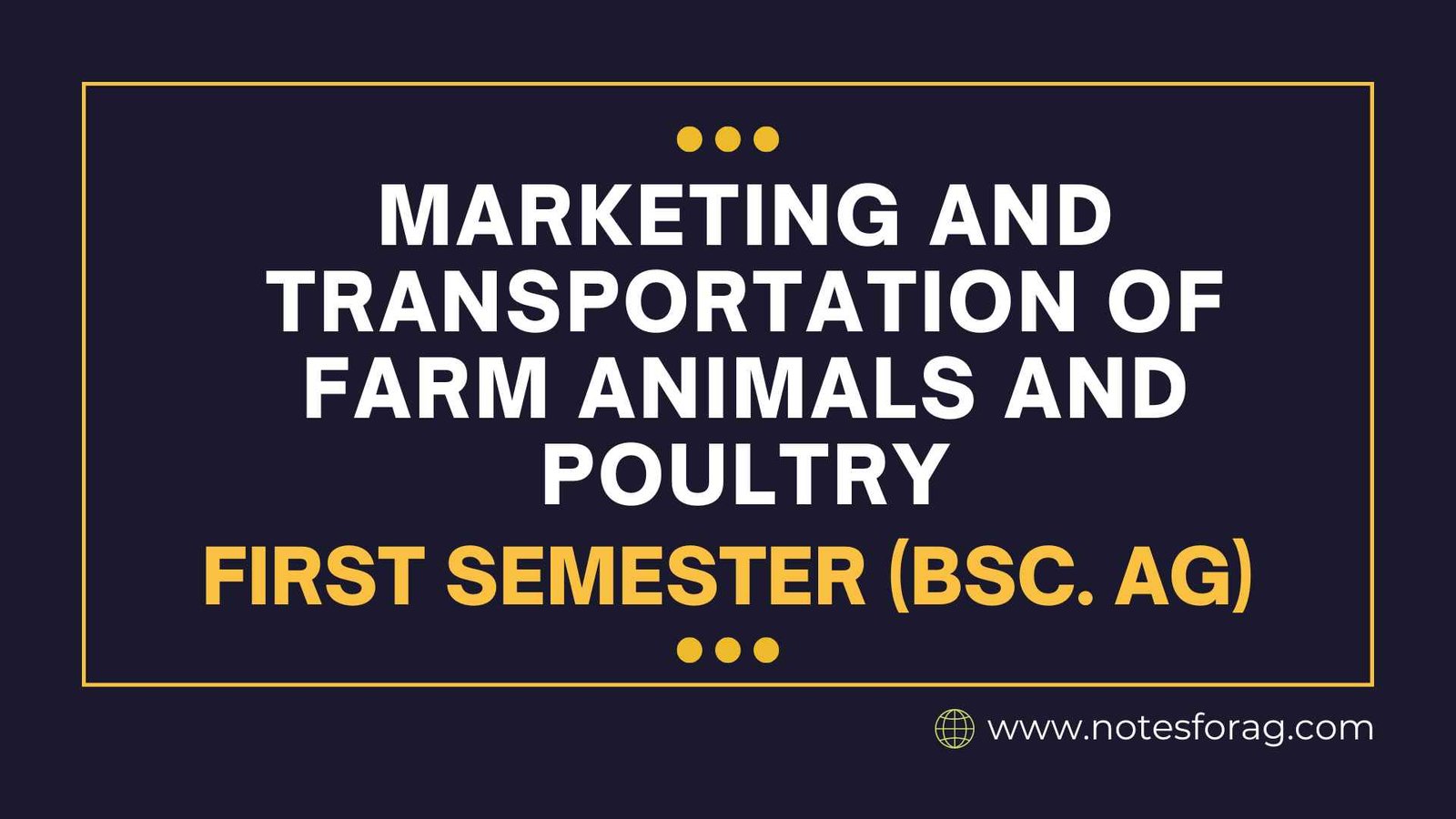In the agriculture sector, successful farm operations and the delivery of high-quality products to customers depend heavily on effective Marketing and Transportation. Farm animals and poultry must be transported with meticulous planning and execution from the farm to the market. In a competitive market, farmers need to differentiate their products, recognize consumer preferences, and reach their target consumers with effective marketing tactics. In order to protect animal health and product quality during transit, farm animal and poultry transportation necessitates careful attention to welfare issues, regulatory compliance, and the application of best practices.
Table of Contents
Understanding the Market for Farm Animals and Poultry
Farmers must have a thorough understanding of the farm animal and poultry markets in order to make wise choices regarding price, production, and marketing tactics. This means looking at a range of variables that affect customer preferences, pricing trends, and demand in the agriculture sector. Farmers can find development opportunities, adjust to shifting market conditions, and increase profitability with the use of market research. Analyzing customer demographics, purchasing patterns, and preferences for particular breeds or manufacturing techniques are crucial components of market understanding.

Farmers also need to keep up with industry standards, legal obligations, and new developments in sustainability and animal welfare. Farmers may efficiently customize their marketing and transportation efforts to satisfy customer wants and preserve competitiveness in the agricultural industry by getting insights into the dynamics of the market.
Marketing Strategies for Farm Animals and Poultry
Marketing farm animals and poultry effectively requires a multifaceted approach that combines both traditional and modern strategies. Some of the marketing strategies are described below:
Marketing:
1. Market Research:
- Identify consumer preferences, pricing patterns, and market demand for farm animal and poultry goods by doing research.
2. Product Differentiation:
- In order to appeal to particular market segments, differentiate your farm animal or poultry goods based on quality, breed, or production practices.
3. Promotion and Advertising:
- Promote your farm animals and poultry goods using a variety of marketing methods, such as social media, websites, and local markets.
4. Certifications and Labels:
- To improve your products’ marketability and attract environmentally conscious customers, get certifications such as organic, free-range, or humane labels.
5. Direct Sales vs. Auctions:
- Think of selling directly to customers through livestock markets, auctions, farmers’ markets, farm stands, and internet platforms.
In conclusion, a comprehensive marketing strategy that successfully promotes farm animals and poultry may be created by integrating branding, online and offline advertising, utilizing social media, and traditional approaches. Farmers can reach a larger audience and build a strong market presence by combining these strategies.
Best Practices for Transporting Farm Animals and Poultry
To protect the safety and wellbeing of farm animals and poultry during transportation, careful planning and adherence to strict standards are required. Legal requirements are crucial for animal transportation and include securing licenses, health certificates, and compliance with regulatory agencies’ criteria for animal care. These documents attest to the animals’ health and suitability for travel, halting the spread of illness and guaranteeing adherence to local, state, federal, and international regulations.

1. Transportation Planning:
- Plan your transportation routes and schedules to reduce the amount of time and stress that farm animals and poultry must endure while in transit.
2. Vehicle Requirements:
- Make sure the vehicles are appropriate for the species being carried, have adequate ventilation, and have non-slip flooring to avoid accidents.
3. Loading and Unloading:
- To reduce stress and injury, handle animals gently during loading and unloading, and make sure that there are sufficient facilities, like ramps or loading docks.
4. Health and Welfare Considerations:
- During transit, abide by the rules pertaining to the health, welfare, and biosecurity of the animals; also, give them the proper bedding, water, and food when needed.
5. Monitoring and Supervision:
- Provide qualified workers to oversee the transportation procedure and keep an eye on animals to ensure their well-being and quickly handle any concerns.
6. Documentation and Record-Keeping:
- To comply with regulatory standards, keep accurate records of animal transportation, including health certificates, transport manifests, and any drugs given during transit.
Farmers may increase their profits while preserving the welfare and caliber of their produce by efficiently marketing their farm animals and poultry products and making sure they are transported safely.
Challenges and Solutions in Marketing and Transportation
The challenges and solutions in marketing and transportation of farm animals and poultry are given below:
Challenges:
- Competition: Having to contend with imports or large-scale producers.
- Market Volatility: Handling varying customer preferences, prices, and demand.
- Animal Welfare: Providing for the security and welfare of animals while they are in transit.
- Regulatory Compliance: Following rules regarding certificates, labeling, and the transportation of animals.
Solutions:
- Niche marketing: Focusing on particular market niches with distinctive goods or manufacturing techniques.
- Diversification: Catering to various customer preferences by providing a range of goods or value-added services.
- Appropriate Handling Facilities: To ensure safe transportation, make investments in loading ramps, chutes, and handling machinery.
- Certification and Training: Educating drivers and handlers about animal welfare and legal compliance.
Farmers may effectively manage the difficulties of marketing and transportation by proactively addressing these issues and coming up with solutions that maintain the highest standards of quality, safety, and animal welfare while facilitating the efficient delivery of farm animal and poultry products to customers.
Frequently Asked Question(FAQ)
What are the key considerations for marketing farm animals and poultry products to consumers?
Understanding customer preferences, expressing the qualities and traits of the product, fostering brand awareness and trust, and being open and honest about agricultural methods and product origins are important factors to take into account.
How can I effectively market my farm animals and poultry products?
Target market identification, product differentiation, digital marketing channels, and forming alliances with local markets or merchants are all examples of effective marketing techniques.
Related Articles

